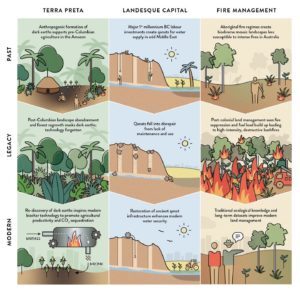
If you think archaeology is much like the popular depictions we often experience through the entertainment industry, you need to think again.
In a report published in the scientific journal, Nature Ecology and Evolution, researchers of the Max Planck Institute for the Science of Human History relate how real archaeology, the archaeology practiced today by researchers and scholars throughout the world, is actually radically different than the classical archaeology performed by explorers a century or more ago, exemplified typically by scenes of people digging within controlled earthen square units, unearthing remarkably preserved, sensational artifacts—a stereotype often projected to the public by the media. But, as the researchers relate in the paper, much ‘archaeology’ as we know it today is actually more often conducted in the labs behind the scenes, where new techniques and technology is applied to analyze the finds brought from the field, employing a multi-disciplinary approach to understanding not only the artifacts themselves but the contextual landscapes of the finds, human settlement patterns and behavior, and how it all relates to other subject matter and disciplines. As noted in the subject Max Planck Institute press release by Nicole Boivin, lead author of the study and Director of the Institute’s Department of Archaeology: “Archaeology today is a dramatically different discipline to what it was a century ago. While the tomb raiding we see portrayed in movies is over the top, the archaeology of the past was probably closer to this than to present-day archaeology. Much archaeology today is in contrast highly scientific in orientation, and aimed at addressing modern-day issues.”*
“Addressing modern-day issues” is an operative phrase here. Key to understanding the evolution of the discipline today, say the study authors, is recognizing how archaeological research is now bing applied to studying and developing solutions to present-day issues. “It is clear that the past offers a vast repertoire of cultural knowledge that we cannot ignore,” states Professor Boivin in the Max Planck Institute press release.* Recognizing this, researchers are examining the way people in past societies enriched their agricultural land, mitigated or prevented devastating fires, moved and distributed water and made their settlements ‘greener’ without using fossil fuel energy sources.
The study authors emphasize that today’s advancements in the application of technological and social solutions to global present-day problems, such as climate change, must work in tandem with archaeology.
“It’s not about glorifying the past, or vilifying progress,” states Boivin in the press release. “Instead, it’s about bringing together the best of the past, present and future to steer a responsible and constructive course for humanity.”
_____________________________

Around the world today, we can find many examples of how past cultural and technological practices and solutions are being revived to address pressing environmental and land management challenges. Examples include (left to right) mobilization of ancient terra preta (anthropogenic dark earth) technology, revitalization of landesque capital (long-term landscape investments) and adoption of traditional fire management regimes. Michelle O’Reilly
_____________________________

Archaeological studies of low-density, agrarian-based cities such as ancient Angkor Wat in Cambodia are increasingly being used to inform the development of more sustainable urban centers in the future. Alison Crowther
_____________________________
*Article Source: A new archaeology for the Anthropocene era, Max Planck Institute for the Science of Human History
If you liked this article, see Beyond Monuments: Ancient Maya Landscapes Revealed Through Technology for an example of modern archaeology at its best.
_____________________________
Advertisement




